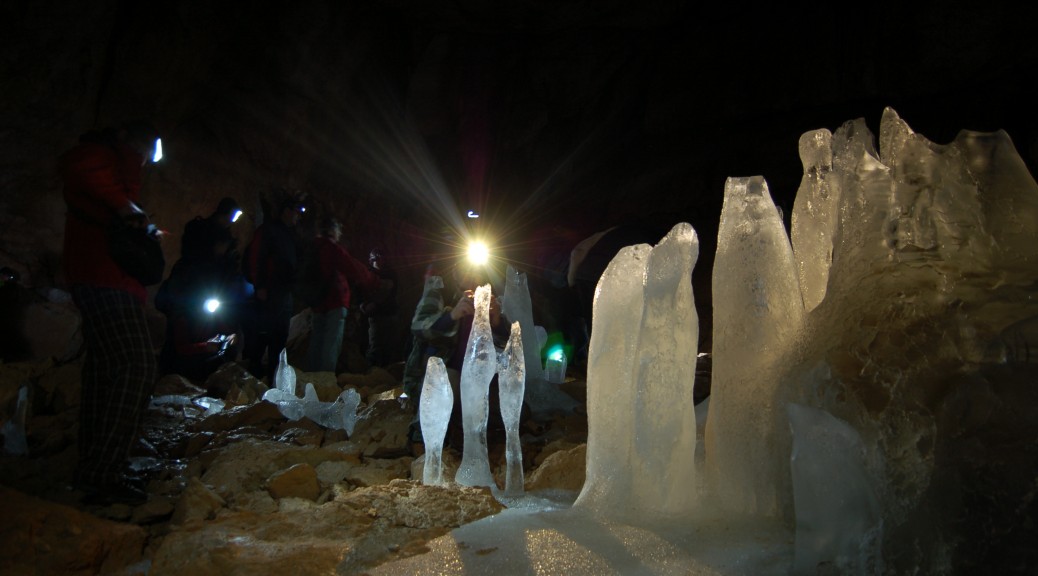 On the battlefields of the Somme, history and geology meld. Beneath the chalky earth, men carved messages, memorials and poems into the walls of tunnels that were dug almost a century ago during the First World War. Explosions in the tunnels buried countless men and reshaped the surface, where grass and trees now soften the cratered landscape. Many of the soldiers’ bodies — and their words — remain buried. Continue reading Modern Tools Reveal World War I Tunneling Tricks
On the battlefields of the Somme, history and geology meld. Beneath the chalky earth, men carved messages, memorials and poems into the walls of tunnels that were dug almost a century ago during the First World War. Explosions in the tunnels buried countless men and reshaped the surface, where grass and trees now soften the cratered landscape. Many of the soldiers’ bodies — and their words — remain buried. Continue reading Modern Tools Reveal World War I Tunneling Tricks
Category Archives: Earth Magazine
Sunken Shipping Containers Form Artificial Reefs
 It seemed like as good a place as any to brood, so whelks covered it with their eggs. Then crabs crawled onto the scene in a slow-motion seafloor pursuit. Octopi floated in from the murky abyss. Together they tore the whelks from the shells, and left behind a mound of empty conches as a warning to others. Sunken shipping containers are not safe for whelks. But they might make a safe refuge for a lot of other sea creatures, according to a new study that examined how the detritus of seaborne commerce affects residents of the deep sea. Continue reading Sunken Shipping Containers Form Artificial Reefs
It seemed like as good a place as any to brood, so whelks covered it with their eggs. Then crabs crawled onto the scene in a slow-motion seafloor pursuit. Octopi floated in from the murky abyss. Together they tore the whelks from the shells, and left behind a mound of empty conches as a warning to others. Sunken shipping containers are not safe for whelks. But they might make a safe refuge for a lot of other sea creatures, according to a new study that examined how the detritus of seaborne commerce affects residents of the deep sea. Continue reading Sunken Shipping Containers Form Artificial Reefs
Caves of Ice: The Next Frontier in Paleoclimatology?
It’s early June in the Austrian Alps. Tourists in shorts sweat their way up a trail from the cable car above Lake Hallstatt. But the summer heat doesn’t stop a group of scientists from pulling on brightly colored jumpsuits over their hiking clothes at the entrance to Mammuthohle, one of the many limestone caves that riddle the Dachstein Massif. Lukas Plan, a geophysicist at the University of Vienna, straps on his headlamp and pauses to warn the crowd of researchers about the cave they are about to enter. It won’t just be chilly inside, he cautions; it will be an Alpine meat locker.
The crowd, part of the fourth international ice cave workshop organized by a network of European geophysicists and glaciologists, is gathered to visit the cave’s year-round ice formations.
Plan turns toward the tunnel in the mountainside and opens the metal door. A rush of wind bursts out. The group prepares to enter, hoping to read the history of the region’s climate in the cave’s ice.
Continue reading Caves of Ice: The Next Frontier in Paleoclimatology?
Internal Waves Beneath The Sea

Seismologist W. Steven Holbrook and oceanographer Raymond Schmitt might be forgiven for talking past each other aboard a research cruise. Oceanographers normally drop probes overboard, measuring the ocean’s temperature, chemistry and motion. To seismologists, however, the ocean is in the way of their measurements: They typically tune their microphones to detect echoes from below the seafloor in search of clues about Earth’s structure. But over the past five years, Holbrook and Schmitt have learned to listen to each other — and to apply seismic techniques to hear hints of the ocean’s structure.
